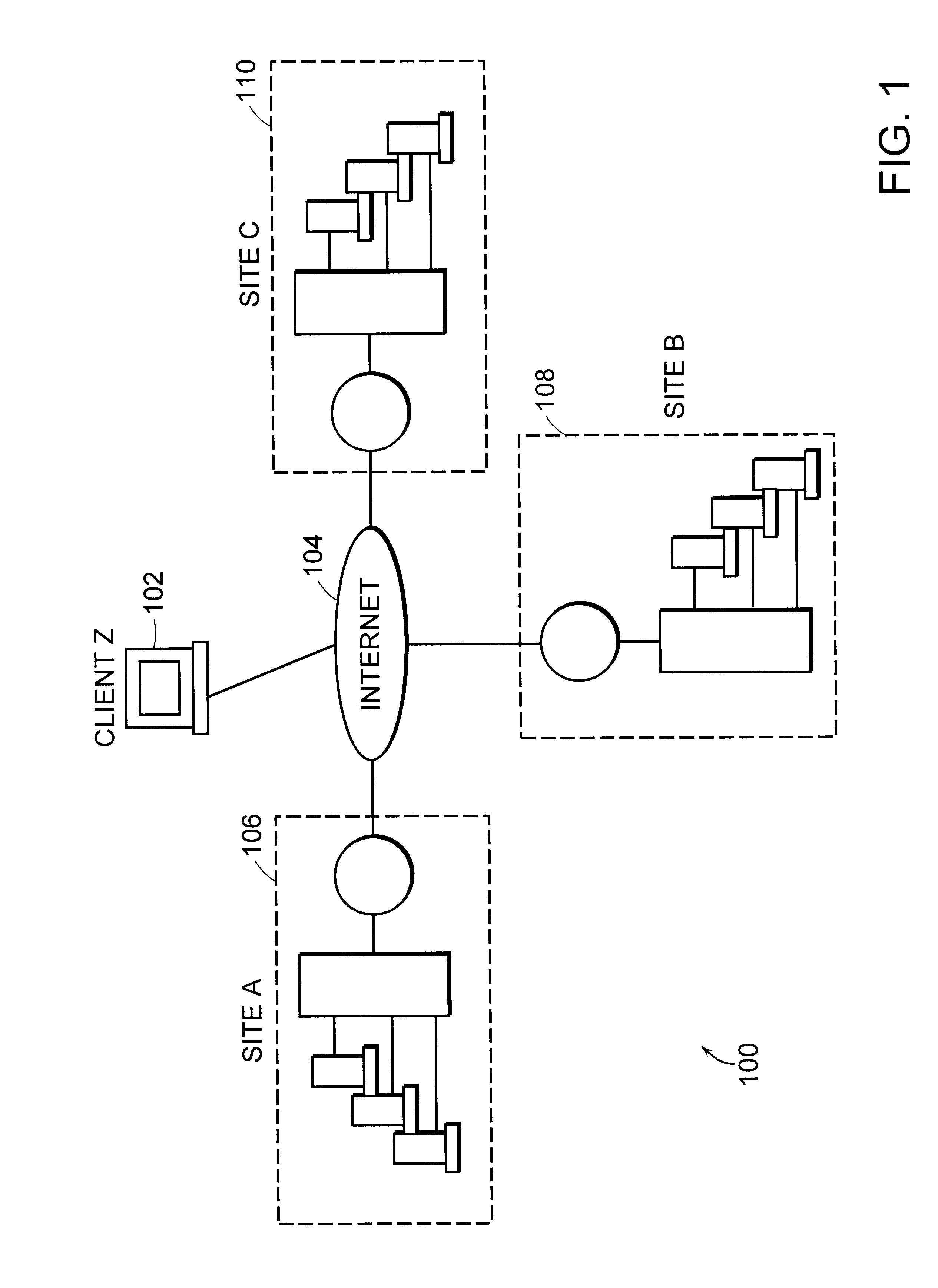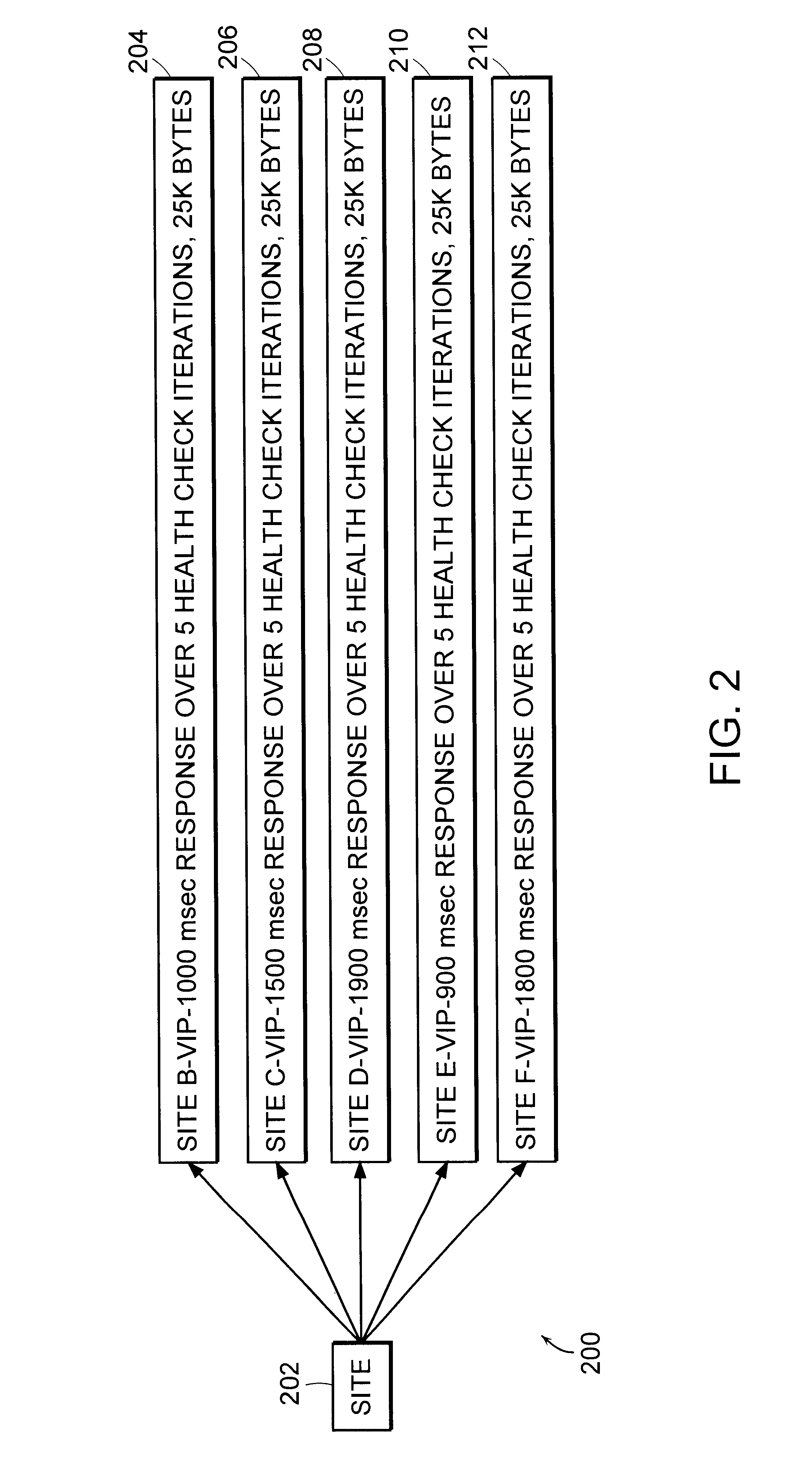Distributed load-balancing internet servers
a load-balancing internet server and distributed technology, applied in the field of distributed load-balancing internet servers, can solve the problems of high degree of administration, unsatisfactory both methods, and limited performance and connectivity of traditional server load-balancing software products
- Summary
- Abstract
- Description
- Claims
- Application Information
AI Technical Summary
Problems solved by technology
Method used
Image
Examples
Embodiment Construction
FIG. 1 represents a distributed-server load-balancing system embodiment of the present invention, and is referred to herein by the general reference numeral 100. The distributed-server load-balancing system 100 allows web-based content and services to be redundantly delivered to many clients, represented by a client "Z" 102, from many independent web-server sites over Internet 104. When a client 102 loads a web-browser program and enters a uniform resource location (URL), e.g., "www.alteon.com / products / index.html".
While IP-addresses used on the Internet 104 are 32-bits in length, most users do not memorize the numeric addresses of the hosts to which they attach. Instead, people are more comfortable with host names. Most IP hosts, then, have both a numeric IP-address and a name. While this is convenient for people, however, the name must be translated back to a numeric address for routing purposes. Intemet hosts use a hierarchical naming structure comprising a top-level domain (TLD),...
PUM
 Login to View More
Login to View More Abstract
Description
Claims
Application Information
 Login to View More
Login to View More - R&D
- Intellectual Property
- Life Sciences
- Materials
- Tech Scout
- Unparalleled Data Quality
- Higher Quality Content
- 60% Fewer Hallucinations
Browse by: Latest US Patents, China's latest patents, Technical Efficacy Thesaurus, Application Domain, Technology Topic, Popular Technical Reports.
© 2025 PatSnap. All rights reserved.Legal|Privacy policy|Modern Slavery Act Transparency Statement|Sitemap|About US| Contact US: help@patsnap.com



